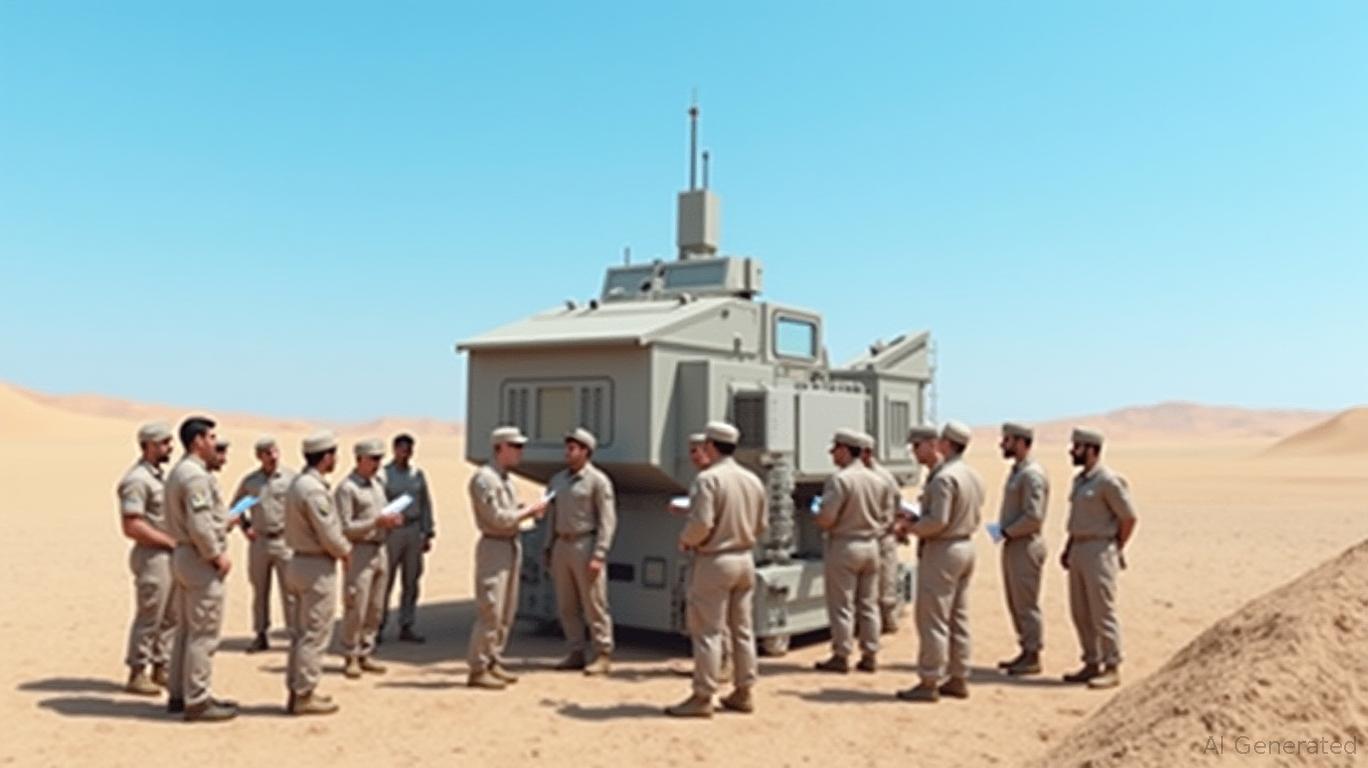Navigating the New Middle East: How De-escalation Fuels Defense and Tech Growth
The Middle East is undergoing a geopolitical pivot, with recent de-escalation efforts creating unexpected opportunities for investors in defense and technology sectors. Reduced tensions—driven by U.S.-Iran nuclear talks, Israeli-Hamas ceasefires, and regional diplomacy—are shifting capital from conflict-driven spending to high-growth industries like defense modernization and renewable energy. Supported by accommodative Fed policies and corporate earnings resilience, this shift presents a strategic entry point for investors.

Defense: The Sustained Growth Engine
The defense sector is the immediate beneficiary of Middle Eastern stability. With Iran's nuclear program and regional security top of mind, Gulf nations are prioritizing missile defense systems, air superiority platforms, and cybersecurity. Key plays:
Raytheon Technologies (RTX): Its SM-3 Block IB interceptors and Patriot air defense systems are critical to Gulf states' security strategies. A February 2025 Pentagon contract for up to 55 interceptors through 2031 guarantees steady revenue.
Lockheed Martin (LMT): F-35 Joint Strike Fighter sales to Saudi Arabia and the UAE, though politically contentious, remain on track. These jets offer unmatched air dominance, and their adoption by Gulf allies could catalyze a regional arms race.
ETF Play: The iShares U.S. Aerospace & Defense ETF (ITA) offers diversified exposure to firms like
and , which benefit from sustained military spending.
Why Now? Defense budgets are rising despite global economic headwinds. Gulf states allocated $157 billion to defense in 2024, with 40% earmarked for modernization—a trend likely to continue as they seek to reduce reliance on U.S. troop presence.
Tech: Valuation Recovery in Energy and Cybersecurity
While defense is the “now” opportunity, technology is the long game. Middle Eastern nations are pivoting from oil dependency to tech-driven growth, fueled by renewable energy investments and cybersecurity needs:
- Renewable Energy Plays:
- Siemens Energy (ENR): The UAE's $1.3 trillion economic blueprint includes 50 GW of renewable capacity by 2030. Siemens, a leader in offshore wind and hydrogen tech, is a key partner.
General Electric (GE): Its grid modernization and solar projects in Saudi Arabia's NEOM city align with Vision 2030 goals.
Cybersecurity: Regional governments are upgrading digital defenses against state-sponsored hackers. CyberArk (CYBR) and CrowdStrike (CRWD) have inked deals with Gulf institutions, leveraging their advanced threat detection tools.
ETF Play: The
Clean Energy ETF tracks firms benefiting from Middle Eastern solar and hydrogen projects, while the First Trust Cybersecurity ETF (IBKR) targets cybersecurity leaders.
Fed Policy Boost: The Fed's pivot toward rate cuts in late 2024-2025 has lowered discount rates for tech firms, making high-growth investments in renewables and cybersecurity more attractive.
Fed Policy: A Tailwind for Risk Assets
The Federal Reserve's shift to a “patient” stance—holding rates near 5% while monitoring inflation—has created a favorable environment for Middle East-linked investments:
- Lower Borrowing Costs: Gulf infrastructure projects rely on global capital. Lower rates reduce financing costs for tech and energy projects.
- Dollar Stability: A weaker greenback since mid-2024 eases repayment burdens for dollar-denominated debt in the region, boosting corporate cash flows.
Risks and Hurdles
- Geopolitical Volatility: While tensions have eased, Iran's nuclear ambitions and Hamas's resilience could reignite conflict. A Hormuz blockade or U.S. airstrike on Iranian sites would spike oil prices (potentially to $130/barrel) and disrupt defense supply chains.
- Sanctions Lingering: U.S. restrictions on Iran's oil exports and dual-use tech continue to hinder full normalization.
Investment Strategy: Pragmatic Diversification
- Defense: Buy RTX and ITA. Allocate 30% of a Middle East-themed portfolio to these names, benefiting from missile defense and fighter jet demand.
- Tech: Pair ENR and iCLN. Target 40% exposure to renewables and grid modernization, with a 10% slice in cybersecurity via CYBR.
- Hedging: Oil ETFs as a buffer. A 20% stake in USO (United States Oil Fund) protects against supply disruptions.
Conclusion
The Middle East's geopolitical de-escalation is a “buy the dip” moment for defense and tech investors. With Gulf nations pivoting to tech-driven growth and U.S. policy supporting risk-taking, this region is no longer just a hotspot—it's a hotspot for opportunity. Monitor Fed rhetoric and oil prices, but don't miss the transition from conflict to innovation.

Comments
No comments yet